Planning Applications Statistics, 2022/23: Annual and Quarterly (October 2022 to March 2023)
Statistics on planning application decision-making timescales for 2022-2023. Historic annual statistics back to 2018-2019 are also presented.
This document is part of a collection
3. Major Developments
Major developments include applications for developments of housing (50 or more homes or large sites where the main use is for housing), as well as other applications covering areas of development such as minerals, business & industry, waste management, electricity generation, freshwater fish farming, marine finfish farming, marine shellfish farming and other developments.
Classification between local and major developments depends on the particular development type. For example, housing developments are classed as major when the application is for 50 or more dwellings or for a site that exceeds two hectares, whereas electricity generation is classed as major when the capacity of the generating station is or exceeds 20 megawatts.
3.1. All Major Developments
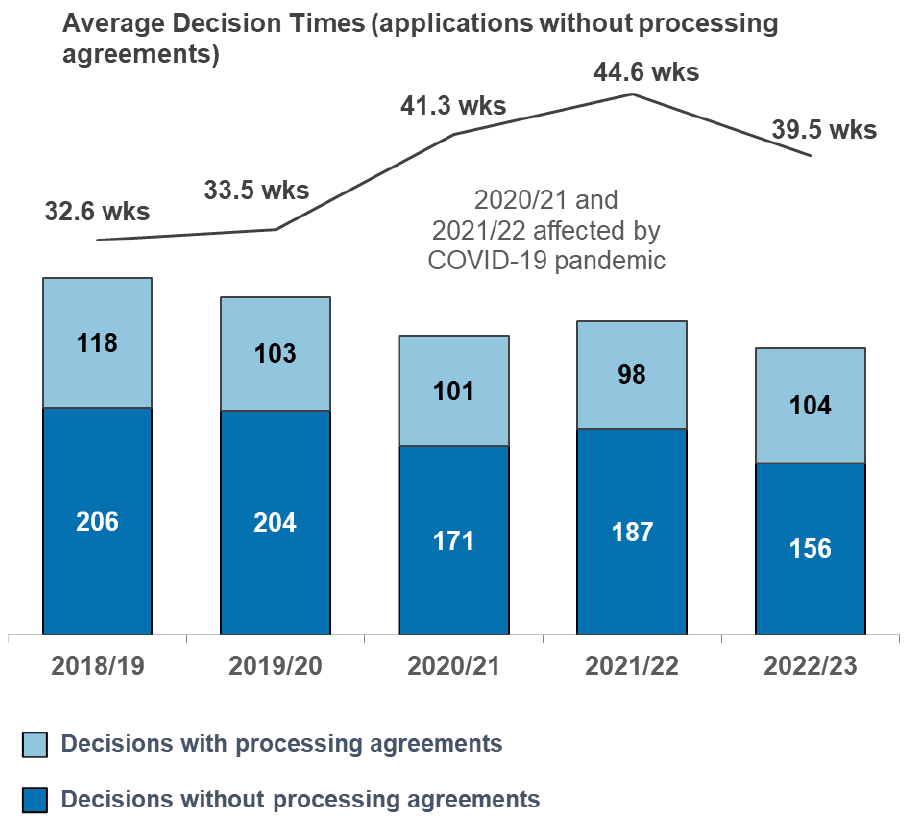
There were 260 major development applications determined in 2022/23. There is a downward trend in numbers of major applications from 324 in 2018/19. Those not subject to processing agreements had an average decision time of 39.5 weeks. This is lower than the two previous years affected by pandemic-related pressures.
It is common for major applications to take a long time to be decided. This will depend on the details of the development. Very long decision times affect the average (mean). The middle value (median) of decision times for major applications was much lower than the average (39.5 wks) at 23.7 weeks.
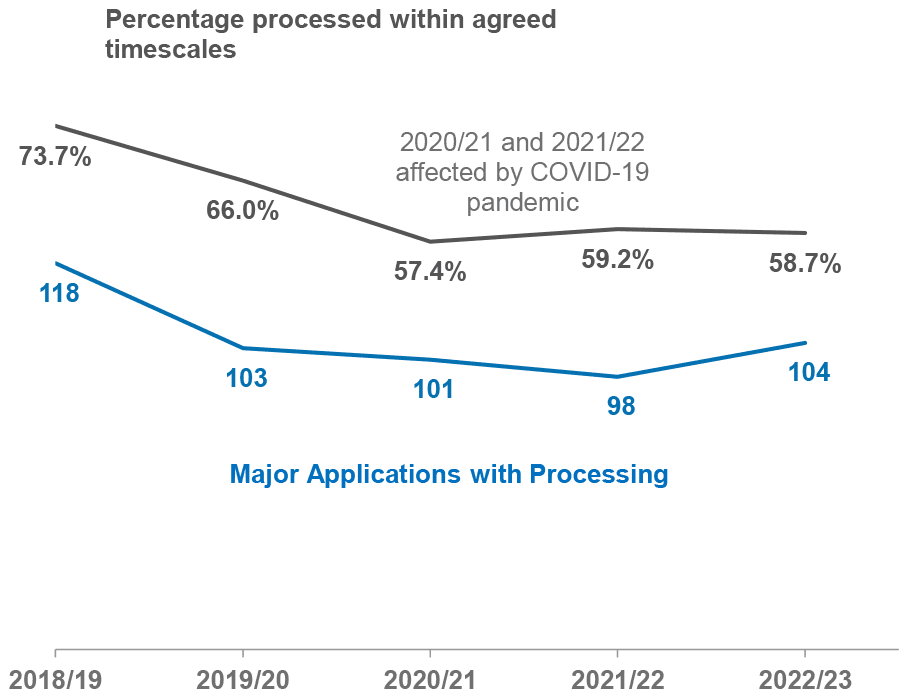
In 2022/23 there were 104 major development applications with processing agreements, 59% of these met agreed timescales that had been set between developers and local authorities. Processing agreements are more likely to be used for major development applications than for local applications.
3.2. Major Housing Developments
Major housing developments are those with 50 or more dwellings or with a site area of 2 hectares or more where the main use is for housing.
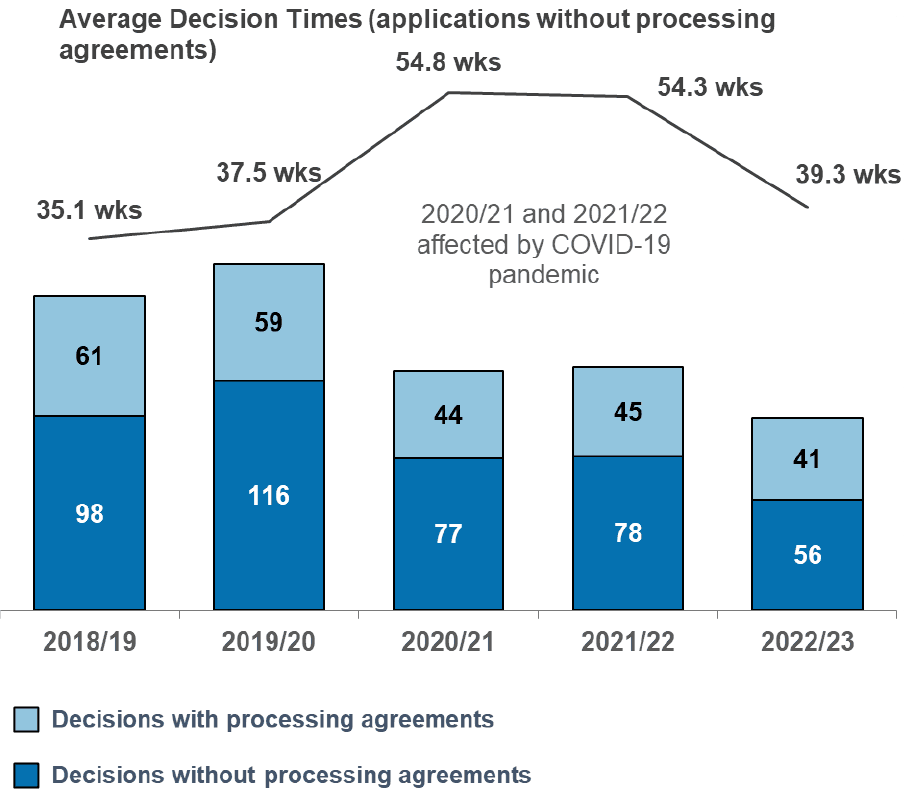
There were 97 major housing development applications determined in 2022/23, the lowest number of the period. Applications have fallen by 45% since 2019/20. Those not subject to processing agreements had an average decision time of 39.3 weeks. Average times had risen markedly during 2020/21 and 2021/22, but this is only slightly higher than the pre-pandemic times.
There were 41 major housing development applications with processing agreements, almost two-thirds (63%) of these met agreed timescales that had been set between developers and local authorities.
3.3. Major Business and Industry Developments
These include construction of a building or structure for any of the following: use as an office, for research and development of products or processes, for any industrial process or for use for storage or as a distribution centre. To be classed as major the gross floor space must exceed 10,000 square metres or the site must exceed 2 hectares.
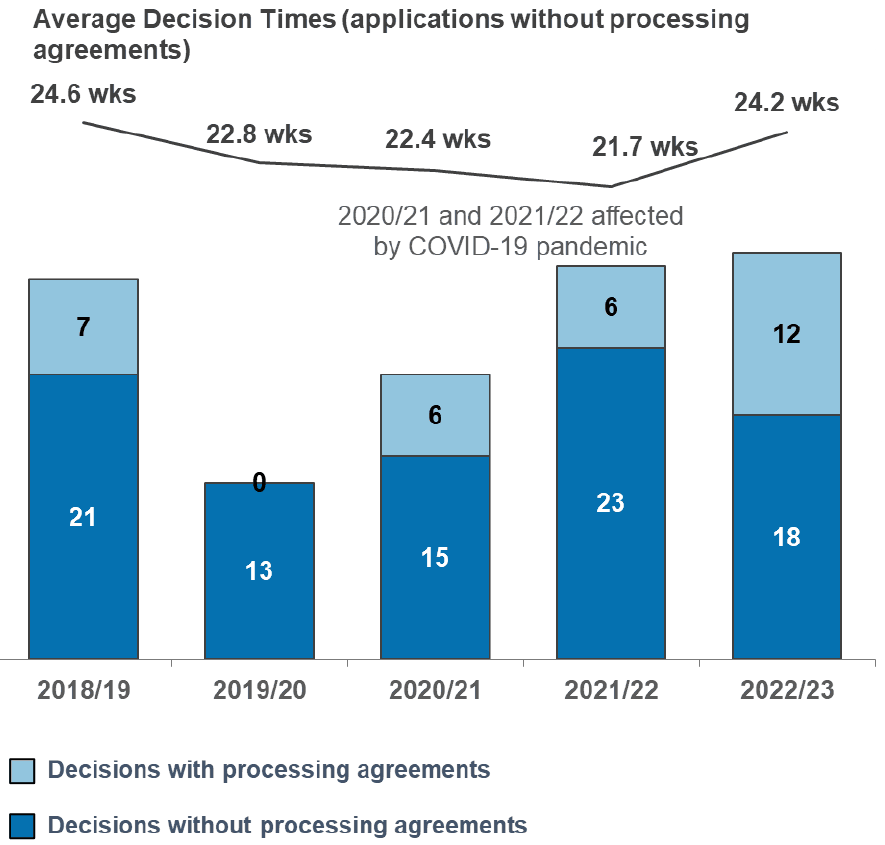
There were 30 major business and industry development applications determined in 2022/23. Those not subject to processing agreements had an average decision time of 24.2 weeks. Average decision times for these applications have been fairly steady since 2018/19.
There were 12 major business and industry development applications with processing agreements and half of these met agreed timescales that had been set between developers and local authorities.
3.4. Major Applications by Development Type
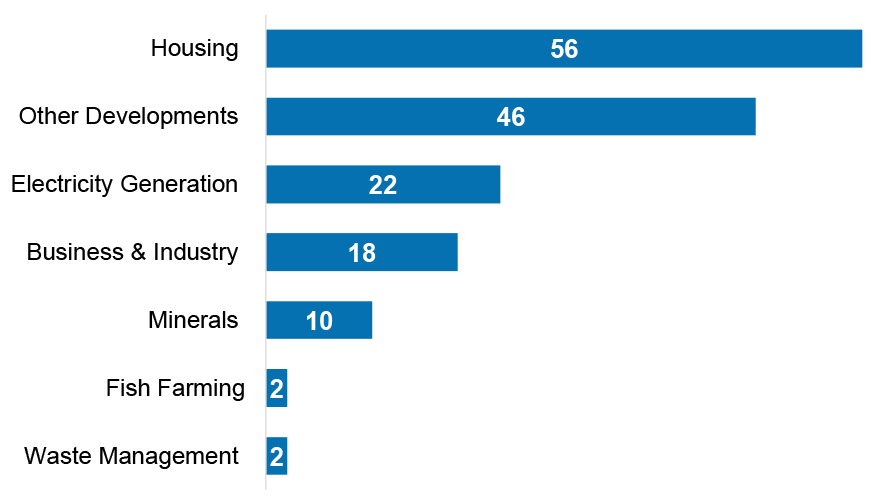
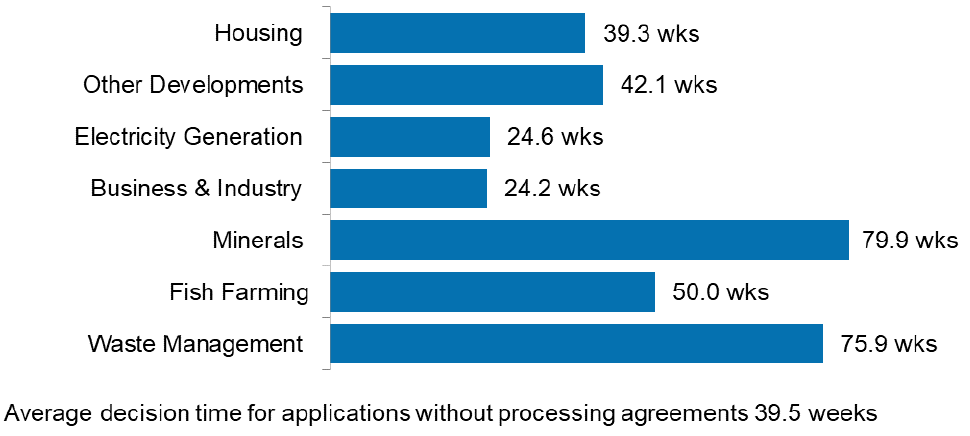
The shortest average decision time of 24.2 weeks was for business and industry developments (12% of all major developments without processing agreements). The longest average decision time was for minerals applications (79.9 weeks)
Contact
Email: planstats@gov.scot
There is a problem
Thanks for your feedback